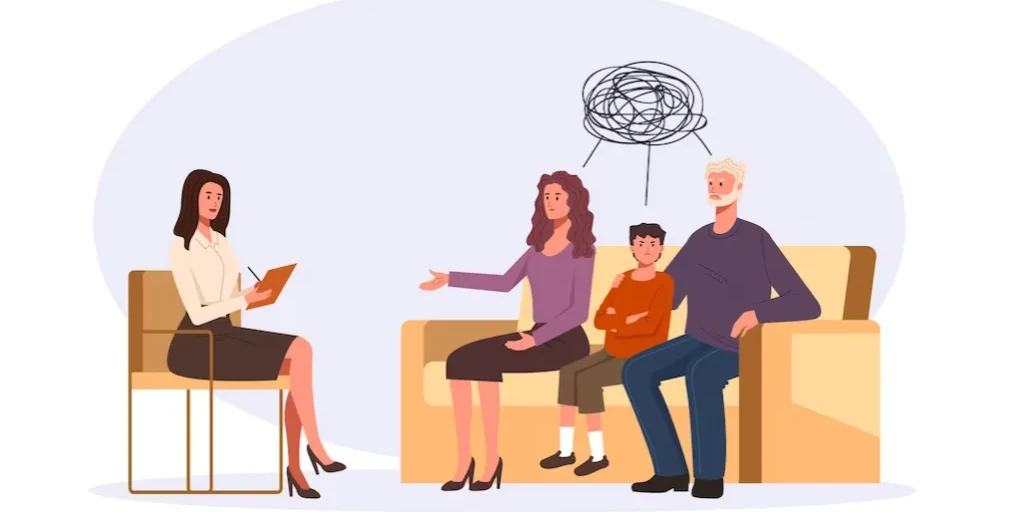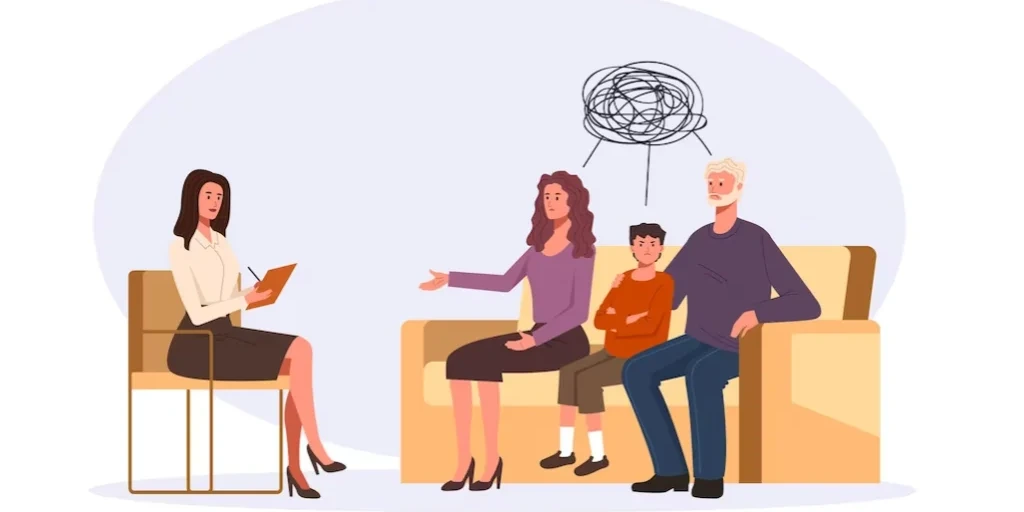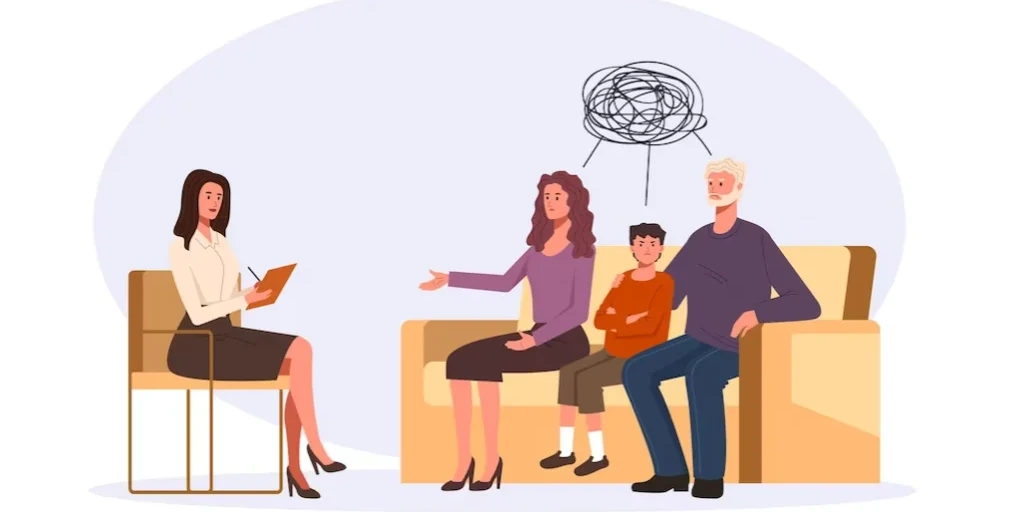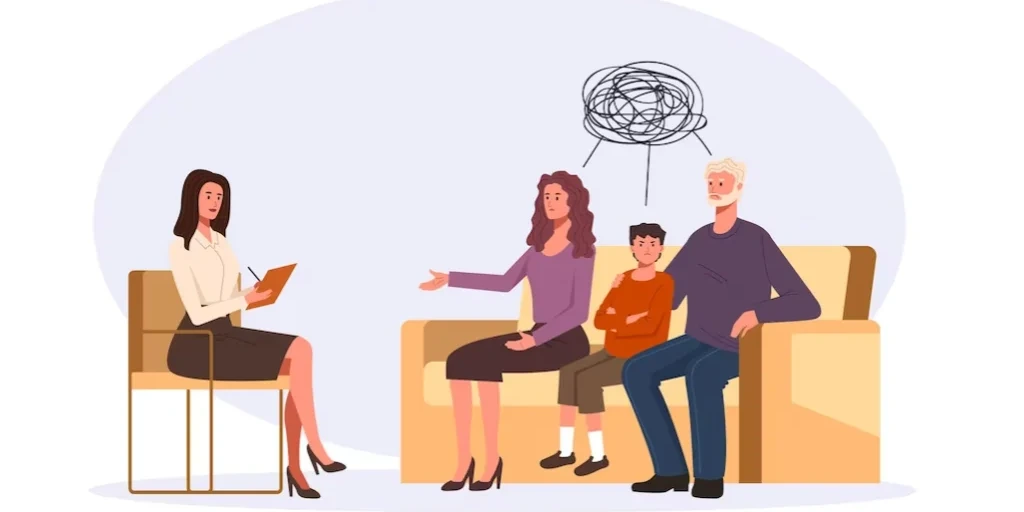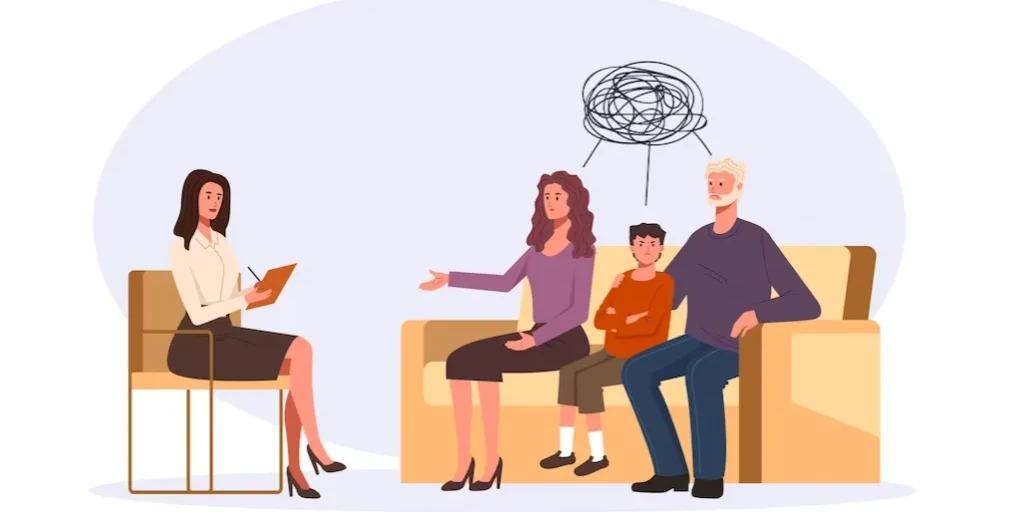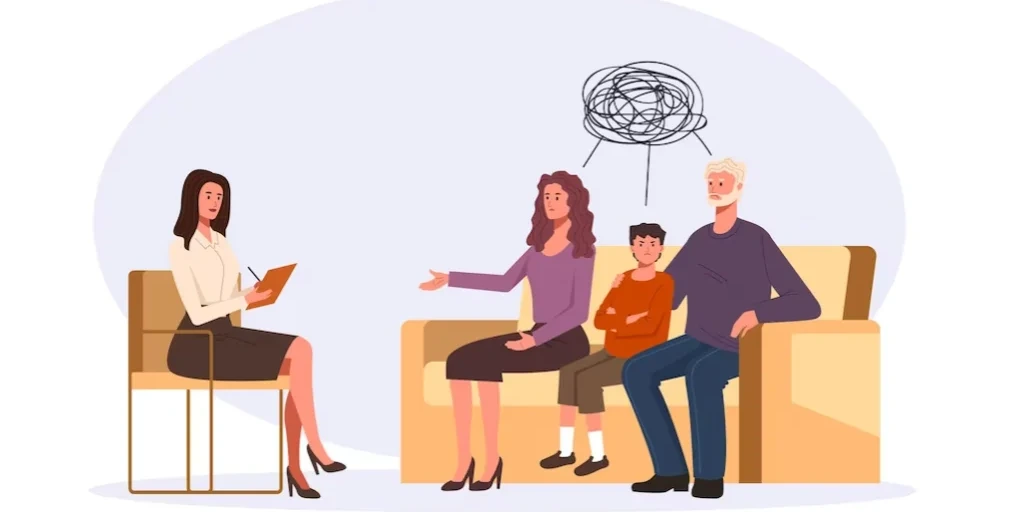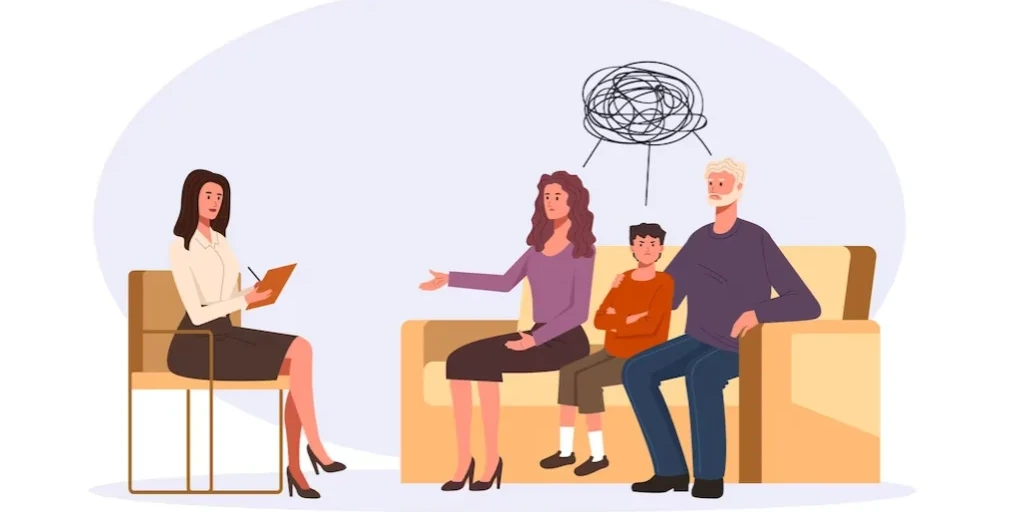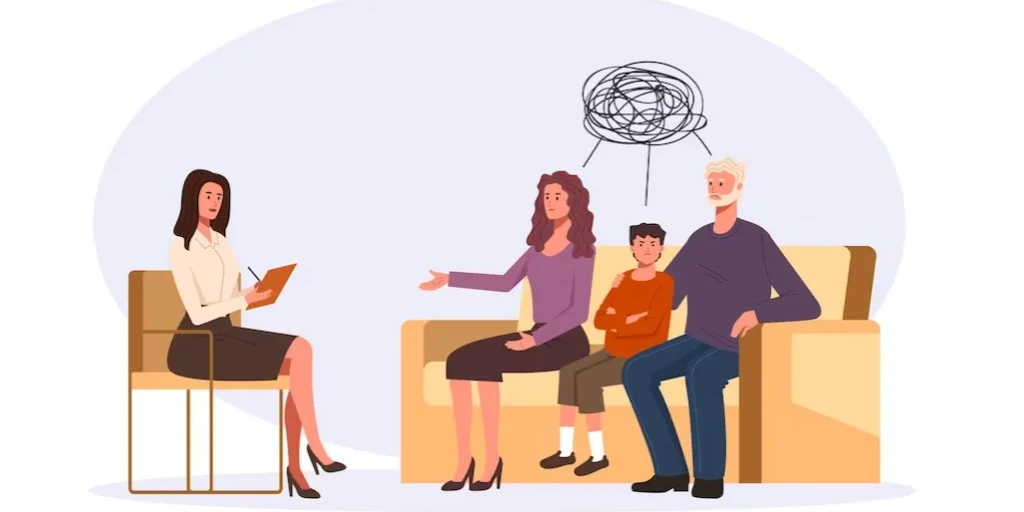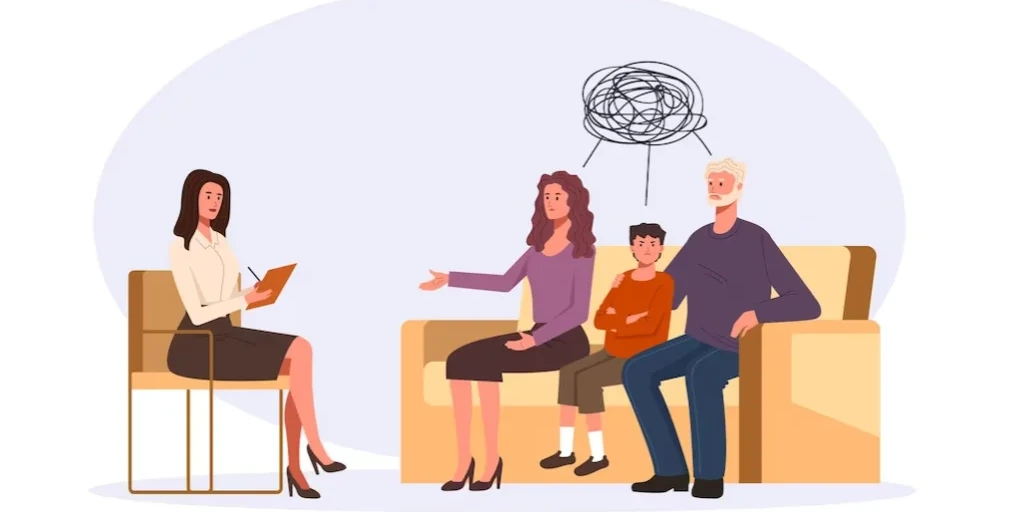24/7 Helpline:
(866) 899-221924/7 Helpline:
(866) 899-2219
Learn more about Intervention Services centers in Ohio County
Intervention Services in Other Counties

Other Insurance Options

Magellan

AllWell

Ceridian

EmblemHealth

Coventry Health Care

Magellan Health

WellPoint

Access to Recovery (ATR) Voucher

CareSource

Highmark

Choice Care Network

WellCare Health Plans

Carleon

UnitedHealth Group

BHS | Behavioral Health Systems

Sliding scale payment assistance

Cigna

Health Net

Holman Group

Molina Healthcare

The Salvation Army – Harbor Light
The Salvation Army, and international movement, is an Evangelical part of the Universal Christian Ch...

Evolve Indy
Evolve Indy is a rehab center that is situated in Indianapolis, Indiana. This addiction treatment ce...

Hickory Treatment Center at Indianapolis
Hickory House, located in Greenfield, Indiana, is a private drug and alcohol addiction treatment cen...

Cummins Behavioral Health Services
Cummins Behavioral Health Services is an outpatient mental health care and addiction recovery facili...

Southwestern Behavioral Healthcare – Community Support Services
Southwestern Behavioral Healthcare – Community Support Services is a private rehab located in Evansv...

Center for Behavioral Health
Center for Behavioral Health -- Fort Wayne is a substance abuse treatment facility specializing in t...

Southern Hills Counseling Center
Southern Hills Counseling Center provides services for mental health and substance abuse disorders. ...

Next Step Foundation Terra Haute
Next Step Foundation Terra Haute is a non-profit rehab located in Terre Haute, Indiana. Next Step Fo...

Landmark Recovery Indianapolis
Landmark Recovery Indianapolis is a private rehab located in Indianapolis, Indiana. Landmark Recover...

CleanSlate Outpatient Addiction Medicine Elkhart
CleanSlate Outpatient Addiction Medicine Elkhart is a private rehab located in Elkhart, Indiana. Cle...

Northeastern Center – Outpatient
Northeastern Center – Outpatient is a private rehab located in Kendallville, Indiana. Northeastern C...

Southwestern Behavioral Healthcare – Dennis N. Moran Center
Southwestern Behavioral Healthcare - Dennis N. Moran Center offers outpatient services for those rec...

Cleanslate Outpatient Addiction Medicine Fort Wayne
Cleanslate Outpatient Addiction Medicine Fort Wayne is a private rehab located in Fort Wayne, Indian...

Avenues Recovery Center at Fort Wayne
Avenues Recovery Center at Fort Wayne is a private drug rehab that utilizes unique community based d...

Recovery Centers of America at Indianapolis
Recovery Centers of America in Indianapolis is a private drug rehab center that specializes in treat...

Life Recovery Center East
Life Recovery Center East is a private rehab located in Indianapolis, Indiana. Life Recovery Center ...

Wernle Youth and Family Treatment Center
Wernle Youth and Family Treatment Center is a private rehab located in Richmond, IN. Wernle Youth an...

ER Counseling
ER Counseling is a private rehab located in Shelbyville, Indiana. ER Counseling specializes in the t...

Regional Mental Health Center
Regional Health Systems in Merrillville, Indiana, is a comprehensive drug and alcohol addiction cent...

Grant Blackford Mental Health – Hester Hollis Concern Center
Grant Blackford Mental Health – Hester Hollis Concern Center is a dual diagnosis behavioral healthca...

Fresh Start Counseling Services
Fresh Start Counseling Services is a private rehab located in Hammond, Indiana. Fresh Start Counseli...

Indiana Center for Recovery
Located in Bloomington, Indiana, is the Indiana Center for Recovery. This private rehab specializes ...

Pinnacle Treatment Centers – Recovery Works Merrillville
Pinnacle Treatment Centers – Recovery Works Merrillville provides addiction treatment services to th...

Victory Clinic Services II
Victory Clinic Services II is a private rehab located in South Bend, Indiana. Victory Clinic Service...

Bridges of Hope
Bridges of Hope located in Anderson, Indiana is an accredited dual diagnosis, co-occurring, treatmen...

Groups
Groups is private healthcare company providing outpatient treatment for opiate addiction using weekl...
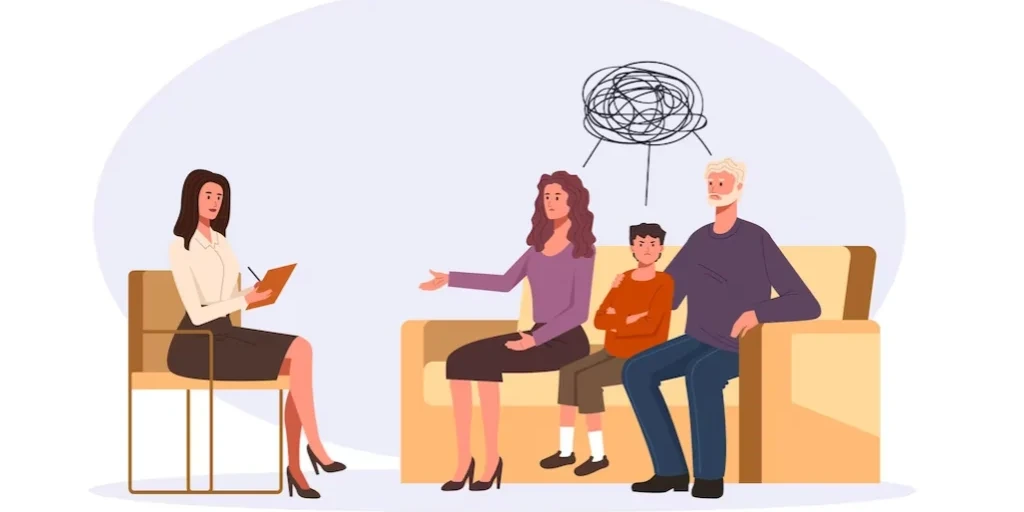
Amethyst House – Men’s House
Amethyst House - Men's Residential Program provides transitional housing and supportive services for...

Parkview Behavioral Health
Parkview Behavioral Health is a comprehensive mental health care and addiction recovery facility for...

Tara Treatment
Tara Treatment Center is a leading rehabilitation facility in Franklin, IN dedicated to helping indi...

Indianapolis Counseling Center
Indianapolis Counseling Center is an outpatient rehab located in Indianapolis, IN. Indianapolis Coun...

Aspire Indiana Health – Ward
Aspire Indiana Health offers substance use disorder treatment on an outpatient basis at all of its C...

Edgewater Health
Edgewater Health offers a full range of inpatient and outpatient treatment modalities in the behavio...

Regional Mental Health Center
Regional Mental Health Center is located in Hammond, Indiana. Regional Mental Health Center has succ...

Centerstone of Indiana – English Manor
Centerstone of Indiana - English Manor is a dual diagnosis drug and alcohol rehab, serving adults in...

House of Hope of Madison County
House of Hope of Madison County is a non-profit rehab located in Anderson, IN. House of Hope of Madi...

Centerstone – Hoosier House
Centerstone–Hoosier House, in Bloomington, Indiana, provides comprehensive mental and behavioral hea...

Center for Problem Resolution
Center for Problem Resolution is a private rehab located in Elkhart, Indiana. Center for Problem Res...

Centerstone – Samuel Gaar Resource Center
Centerstone – Samuel Gaar Resource Center is a private rehab located in Richmond, Indiana. Centersto...

Options Behavioral Health
Situated in Indianapolis, Indiana, Options Behavioral Health is a mental health and addiction treatm...
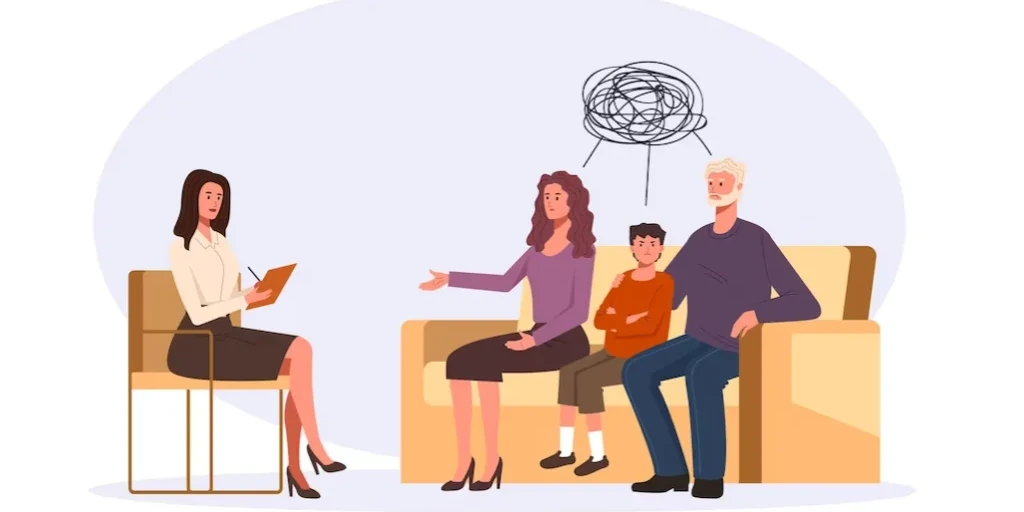
Wooded Glen Recovery Center
Wooded Glen Recovery Center, located in Henryville, Indiana, is a luxury drug and alcohol rehab for ...

Bowen Center – Russell House
Located in Plymouth, Indiana, Bowen Center – Russell House is a drug and alcohol rehab for adults wi...

Columbus Behavioral Health for Children and Adolescents
Columbus Behavioral Health for Children and Adolescents is a private rehab located in Columbus, Indi...

Park Center – Carew Street
Parkview Behavioral Health Institute — Park Center is a behavioral and substance abuse treatment fac...

Emerald Neuro-Recover
The Emerald Neuro Recover drug rehab center provides general medicine alongside extensive addiction ...

Headwaters Counseling
Headwaters Counseling is a not for profit behavioral health and substance abuse treatment facility i...

Spero Health – Indianapolis
Spero Health – Indianapolis is a private rehab located in Indianapolis, Indiana. Spero Health – Indi...

Aspire Indiana Health – Hoak
Aspire Indiana Health offers substance use disorder treatment on an outpatient basis at all of its C...

Centerstone
Centerstone is a non-profit rehab located in Greensburg, Indiana. Centerstone specializes in the tre...

Sycamore Springs
Sycamore Springs, located in Lafayette, Indiana, is a luxury, 12-Step drug and alcohol rehab for adu...

Northwest Indiana Treatment Center
Located in Merrillville, Indiana, Northwest Indiana Treatment Center offers alcohol and drug rehab s...

Centerstone of Indiana Inc Recovery Engagement Center
Centerstone of Indiana Inc. - Recovery Engagement Center (REC) is a community-based mental and behav...

Eskenazi Health Midtown – Outpatient
Eskenazi Health Midtown – Outpatient is a public rehab located in Indianapolis, Indiana. Eskenazi He...

Frontline Foundations
Frntline Foundations is a drug and alcohol addiction treatment center based in Chesterton, IN where ...

Centerstone – Caldwell House
Centerstone – Caldwell House is a non-profit rehab located in Columbus, Indiana. Centerstone – Caldw...

New Horizon
New Horizon is a private rehab located in Gary, Indiana. New Horizon specializes in the treatment of...

Home with Hope – The Brighthouse
Home with Hope - The Brighthouse offers inpatient treatment for individuals with alcohol and/or subs...

Center for Problem Resolution
Center for Problem Resolution is a private rehab located in Goshen, Indiana. Center for Problem Reso...

Northeastern Center – Outpatient
Northeastern Center – Outpatient is a private rehab located in Auburn, Indiana. Northeastern Center ...

Northeastern Center – Outpatient
Northeastern Center – Outpatient is a private rehab located in Lagrange, Indiana. Northeastern Cente...

Southwestern Behavioral Healthcare
Southwestern Behavioral Healthcare- Evansville offers alcohol and drug addiction treatment to men an...

Harsha Behavioral Center
Harsha Behavioral Center, in Terre Haute, Indiana, is a comprehensive mental health and addiction re...

Community Mental Health Center
Community Mental Health Center is a traditional rehab located in Brookville, IN. Community Mental He...

Community Mental Health Center – North Park Avenue
Community Mental Health Center – North Park Avenue is a private rehab located in Batesville, Indiana...

Alpine Counseling Center
Alpine Counseling Center is a private rehab located in Lafayette, Indiana. Alpine Counseling Center ...

Boca Recovery Center Bloomington
Boca Recovery Center Bloomington is set in beautiful Bloomington, Indiana. This luxury drug rehab ce...

Bowen Center
Bowen Center is a private rehab located in Auburn, Indiana. Bowen Center specializes in the treatmen...

Addiction Rehab Centers – ARC
Located in Indianapolis, Indiana, Addiction Rehab Centers offers alcohol and drug rehab services to ...

Meridian Health Services
Meridian Health Services is a private rehab located in Muncie, Indiana. Meridian Health Services spe...

Porter Starke Services
Porter Starke Services offers a full continuum of care for adults, families, adolescents, and childr...

Aspire Indiana Health – Noblesville
Aspire Indiana Health offers substance use disorder treatment on an outpatient basis at all of its C...

Adult and Child Center – E. Ohio Street
Adult and Child Center - E. Ohio Street helps people live healthier lives and reach their goals. Ser...

Community Mental Health Center – East George Street
Community Mental Health Center – East George Street is a private rehab located in Batesville, Indian...

Southern Indiana Treatment Center
Southern Indiana Treatment Center is a private rehab located in Charlestown, Indiana. Southern India...

Aspire Indiana Health – Lebanon Health Center
Aspire Indiana Health offers substance use disorder treatment on an outpatient basis at all of its C...

Oaklawn Psychiatric Center
Oaklawn Psychiatric Center - Lakeview Drive offers a wide range of mental health and addictions prog...

Swanson Center – LaPorte Comprehensive Mental Health Council
Swanson Center – LaPorte Comprehensive Mental Health Council is a private rehab located in La Porte,...

Community Health Network – Warren Township
Community Health Network - Warren Township offers the most comprehensive behavioral healthcare syste...

Aspire Indiana Health – Anderson
Aspire Indiana Health offers substance use disorder treatment on an outpatient basis at all of its C...

Grant Blackford Mental Health – Milestone Addiction Services
Grant Blackford Mental Health - Milestone Addiction Services offers outpatient treatment for individ...

LifeSpring Health Systems
LifeSpring Health Systems is a private rehab located in Jeffersonville, Indiana. LifeSpring Health S...

Regional Mental Health Center – Stark Center
Regional Mental Health Center – Stark Center is a drug and alcohol rehab and medical facility locate...

Valley Professionals Community – Health Center
Valley Professionals Community Health Center, located in Clinton, Indiana, offers outpatient mental ...

LifeSpring Health Systems – Washington County Office
LifeSpring Health Systems – Washington County Office is a private rehab located in Salem, Indiana. L...

Bowen Center
Bowen Center is a private rehab located in Syracuse, Indiana. Bowen Center specializes in the treatm...

Brighter Tomorrows
Brighter Tomorrows is a private rehab located in Plymouth, Indiana. Brighter Tomorrows specializes i...

Midwest Center for Youth and Families
Midwest Center for Youth and Families, in Kouts, Indiana, is an inpatient dual diagnosis and mental ...

LifeSpring Health Systems – Turning Point Center
The LifeSpring Health Systems Turning Point Center is a co-occurring mental health and substance abu...

Four County Counseling Center
Four County Counseling Center, in Peru, Indiana, is an outpatient mental and behavioral health care ...

Centerstone
Centerstone is a private rehab located in Mooresville, Indiana. Centerstone specializes in the treat...

Park Center Counseling – Quinn House
Park Center Counseling – Quinn House is a private rehab located in Fort Wayne, Indiana. Park Center ...

Swanson Center
Swanson Center is an outpatient mental health and addiction recovery facility for youth and adults i...

Fresh Start Counseling Services
Fresh Start Counseling Services is a private rehab located in Merrillville, IN. Fresh Start Counseli...

Center for Brief Therapy
Center for Brief Therapy is a private rehab located in Fort Wayne, Indiana. Center for Brief Therapy...

Aspire Indiana Health – Indianapolis
Aspire Indiana Health offers substance use disorder treatment on an outpatient basis at all of its C...

Four County Counseling Center
Four County Counseling Center is a non-profit community mental health center located in Logansport, ...

Premier Care of Indiana
Premier Care of Indiana is a private rehab located in Marion, Indiana. Premier Care of Indiana speci...

Hamilton Center
Hamilton Center is a regional behavioral health system serving central and west central Indiana. Ham...

Bowen Center
Bowen Center is a private rehab located in Warsaw, Indiana. Bowen Center specializes in the treatmen...

Community Health Network – Community Hospital North Behavioral Health Pavilion
Community Health Network – Community Hospital North Behavioral Health Pavilion, located in Indianapo...

Centerstone – North Bevcher Drive
Centerstone – North Bevcher Drive is a private rehab located in Madison, Indiana. Centerstone – Nort...

VA Northern Indiana Health Care System – Goshen Community Based Outpatient Clinic
Goshen VA Community Based Outpatient Clinic is a clinic located in Goshen, IN. Goshen VA Community B...

Centerstone Children and Family Services
Centerstone Children and Family Services is a private rehab located in Union City, Indiana. Centerst...

LifeSpring Health Systems – Integrated Treatment Center
LifeSpring Health Systems – Integrated Treatment Center is a private rehab located in Jeffersonville...

Franciscan Saint Margaret Behavioral Health
Situated in Dyer, Indiana, Franciscan Saint Margaret Behavioral Health is a drug and alcohol treatme...

Sandra Eskenazi Mental Health Center
Sandra Eskenazi Mental Health Center, Indiana's first community mental health center, provides compr...

Our Place – Drug and Alcohol Education
Our Place - Drug and Alcohol Education is a non-profit rehab located in New Albany, IN. Our Place - ...

Warren Outpatient
Warren Outpatient is a private rehab located in Indianapolis, Indiana. Warren Outpatient specializes...

Crossroad Child & Family Services
Crossroad Child and Family Services is a faith based, nonprofit mental health facility in Fort Wayne...

Porter Starke Services
Porter-Starke Services provides comprehensive mental and behavioral health care for youth and adults...

Lakeside Behavioral Solutions Company
Lakeside Behavioral Solutions Company is a private rehab located in Hammond, IN. Lakeside Behavioral...

Memorial Hospital – Behavioral Health
Memorial Hospital – Behavioral Health is a private rehab located in Jasper, Indiana. Memorial Hospit...

Centerstone
Centerstone is a private rehab located in Seymour, Indiana. Centerstone specializes in the treatment...

Selah House
Selah House provides Christ-centered treatment for anorexia, bulimia, and other eating disorders. Th...

Cornerstone Behavioral Health
Cornerstone Behavioral Health, in Marion, Indiana, is a comprehensive mental and behavioral health f...

Centerstone – North Marr Road
Centerstone - North Marr Road is a non-for-profit rehab located in Columbus, Indiana. Centerstone - ...

Care Counseling Services
Care Counseling Services is a private rehab located in Valparaiso, Indiana. Care Counseling Services...

Advantage Counseling – Fitness Services
Advantage Counseling – Fitness Services is a private substance abuse rehab found in Plainfield, Indi...

Family Counseling Center
Family Counseling Center is a private rehab located in Auburn, IN. Family Counseling Center speciali...

LifeSpring Health Systems – Floyd County Office
LifeSpring Health Systems is a premier provider of co-occurring mental health and substance use diso...

Addictions Recovery Centers
Addictions Recovery Centers is a private rehab located in Goshen, Indiana. Addictions Recovery Cente...

Amethyst House – Women’s House
Situated in Bloomington, Indiana, Amethyst House – Women’s House is a drug and alcohol treatment cen...

Gallahue Mental Health Services
Gallahue Mental Health Services is a private rehab located in Greenfield, Indiana. Gallahue Mental H...

The Willow Center
The Willow Center is an outpatient mental health care and addiction recovery facility for adolescent...

Wabash Valley Alliance – 610 Main Street
Wabash Valley Alliance's mission is to provide quality behavioral health and addictions care based o...

Centerstone Community Support
Centerstone Community Support is a private rehab located in Richmond, Indiana. Centerstone Community...

Wabash Valley Alliance
Wabash Valley Alliance's mission is to provide quality behavioral health and addictions care based o...

Clark Memorial Hospital – Behavioral Health
Clark Memorial Hospital – Behavioral Health is a private rehab located in Jeffersonville, Indiana. C...

Fresh Start Counseling Services
Fresh Start Counseling Services is a private rehab located in Valparaiso, IN. Fresh Start Counseling...

Community Mental Health Center – South Intensive Family Services
Community Mental Health Center – South Intensive Family Services is a private rehab located in Lawre...

East Indiana Treatment Center
East Indiana Treatment Center is a private rehab located in Lawrenceburg, Indiana. East Indiana Trea...

Wabash Friends Counseling Center
Wabash Friends Counseling Center is a private rehab located in Wabash, IN. Wabash Friends Counseling...

Agape Counseling and Human Services
Agape Counseling and Human Services is a private rehab located in Indianapolis, Indiana. Agape Couns...

Evansville Treatment Center
Evansville Treatment Center is a private rehab located in Evansville, Indiana. Evansville Treatment ...

Centerstone
Centerstone of Indiana- Centerstone Winchester is a non-profit rehab located in Winchester, IN. Cent...

Centerstone – New Castle
Centerstone – New Castle is a private rehab located in New Castle, Indiana. Centerstone – New Castle...

Franklin County Counseling Center
Franklin County Counseling Center is a private rehab located in Brookville, Indiana. Franklin County...

Regional Mental Health – Strawhun Center
Regional Mental Health - Strawhun Center is located in Merrillville, Indiana. Regional Mental Health...

Oaklawn Psychiatric Center
Oaklawn Psychiatric Center offers comprehensive mental and behavioral health care for youth and adul...

Centerstone
Centerstone is a private rehab located in Richmond, Indiana. Centerstone specializes in the treatmen...

Addictions Recovery Centers
Addictions Recovery Centers provides outpatient services that are related to the misuse of one or mo...

Hope House
Hope & Harriet is a drug and alcohol rehabilitation program offered by the YWCA in Fort Wayne, India...

Volunteers of America
Volunteers of America is a substance abuse rehab facility in Indianapolis, IN, that provides family ...

Franciscan Saint Anthony Psychiatric Services
Franciscan Saint Anthony Psychiatric Services is a private rehab located in Michigan City, Indiana. ...

Southwestern Behavioral Healthcare – Lillian G. Moulton Center
Southwestern Behavioral Healthcare - Lillian G. Moulton Center offers outpatient services for those ...

Advantage Counseling – Education Services
Advantage Counseling – Education Services is a private rehab located in Martinsville, Indiana. Advan...

Recovery Journey
Recovery Journey is a private rehab located in Elkhart, Indiana. Recovery Journey specializes in the...

Community Mental Health Center – North Depot Street
Community Mental Health Center – North Depot Street is a non-profit rehab located in Batesville, Ind...

Community Health Network – Community Counseling Center
Community Health Network - Community Counseling Center is located in Frankfort, Indiana. Community H...
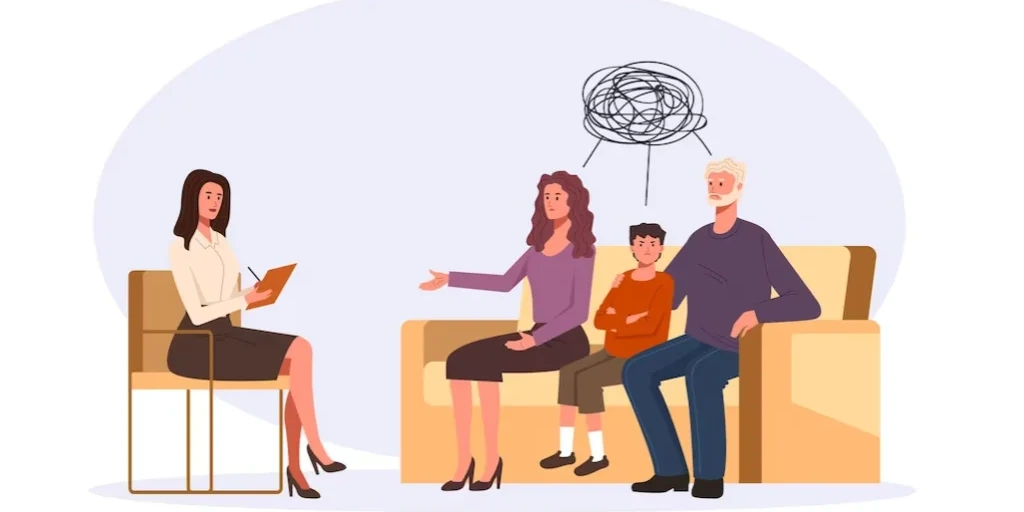
Michiana Behavioral Health
Michiana Behavioral Health is a 12-Step drug and alcohol rehab and mental health facility for youth ...

Community Mental Health Center
Community Mental Health Center - State Route offers outpatient treatment for individuals with alcoho...

Addiction and Behavioral Counseling Services
Addiction and Behavioral Counseling Services provides outpatient and intervention services for adole...

Franciscan Saint Francis Behavioral Health – East Southport Road
Franciscan Saint Francis Behavioral Health - East Southport Road offers outpatient and inpatient tre...

LifeSpring Health Systems – Scott County Office
LifeSpring Health Systems – Scott County Office is a private rehab located in Scottsburg, Indiana. L...

Fall Creek Counseling Services
Fall Creek Counseling Services is a private rehab located in Indianapolis, Indiana. Fall Creek Couns...

Community Mental Health Center – Outpatient
Community Mental Health Center – Outpatient is a private rehab located in Lawrenceburg, Indiana. Com...

Indianapolis Treatment Center
Indianapolis Treatment Center is a private rehab located in Indianapolis, Indiana. Indianapolis Trea...

Phoenix Associates
Phoenix Associates, in Fort Wayne, Indiana, provides outpatient mental and behavioral healthcare for...

Youth Opportunity Center
Youth Opportunity Center is a private rehab located in Muncie, Indiana. Youth Opportunity Center spe...

Hamilton Center
Hamilton Center, located in Indianapolis, Indiana, provides outpatient mental and behavioral health ...

Hamilton Center – Leading Behavioral Health
Hamilton Center – Leading Behavioral Health is a private rehab located in Terre Haute, Indiana. Hami...

The Gilead House
The Gilead House is a Non-Profit rehab center located in Indianapolis, IN. The Gilead House speciali...

Personal Counseling Services
Personal Counseling Services is an outpatient behavioral health treatment facility located in Clarks...

Star Guides Wilderness
Star Guides Wilderness is a private rehab located in Indianapolis, Indiana. Star Guides Wilderness s...

The Way of Rockport Indiana
The Way of Rockport Indiana is a faith-based, 12-Step drug and alcohol rehab for adults in Rockport,...

Bowen Center
Bowen Center is a non-profit rehab located in Pierceton, IN. Bowen Center specializes in the treatme...

Spero Health – Muncie
Spero Health – Muncie is a private rehab located in Muncie, Indiana. Spero Health – Muncie specializ...

Seeds of Hope
Seeds of Hope is a unique addiction recovery program for women over the age of 18. Seeds of Hope is ...

The Thirteen Step House
The 13 Step House is a private substance abuse recovery house in Fort Wayne, Indiana. This residenti...

Children’s First Rehabilitation Services
Children’s First Rehabilitation Services is a private rehab located in Evansville, Indiana. Children...

Cardinal Recovery
Cardinal Recovery is a drug and alcohol treatment center that supports adults with substance use dis...

Serenity House of Gary
Serenity House of Gary is a half-way house for those individuals that are recovering from substance ...

Aspire Indiana Health – Ward
Aspire Indiana Health offers substance use disorder treatment on an outpatient basis at all of its C...

Avenues Recovery Center at Louisville
A unique community-based detox and residential style extended care program that’s truly customized t...

Sunrise Recovery
Sunrise Recovery specializes in the treatment of Drugs and Alcohol detox. We focus on wide varieties...

Bowen Center
Bowen Center is a private rehab located in Columbia City, Indiana. Bowen Center specializes in the t...

Oxford House Abbeywood
Oxford House Abbeywood, located in Clarksville, Indiana, is a democratically run, self-supporting, a...

Adult and Child Center
Adult and Child Center - Main Street helps people live healthier lives and reach their goals. Servic...

Four County Counseling Center
4C Health Solutions is a dual diagnosis behavioral health treatment center located in Kokomo, IN. Wi...

Sandra Eskenazi Mental Health Center – N. Meridian St
Sandra Eskenazi Mental Health Center Adult Addictions Program is an outpatient facility located in I...

Franciscan Saint Anthony Michigan City
Franciscan Saint Anthony Michigan City is a private rehab located in Michigan City, Indiana. Francis...

Oxford House Indy
Oxford House Indy is a non-profit house located in Indianapolis, IN. Oxford House Indy helps individ...

Woodview Psychology Group
Woodview Psychology Group is a private rehab located in Indianapolis, Indiana. Woodview Psychology G...

Sunrise Recovery IOP
Sunrise Recovery Care located in Jeffersonville, IN, is an accredited outpatient drug rehab facility...

Landmark Recovery Fort Wayne
Praxis of Fort Wayne by Landmark Recovery is a drug and alcohol rehab center in Bluffton, IN. Treatm...

Pathway to Recovery
Pathway to Recovery is a rehab organization located in Indianapolis, IN. Pathway to Recovery special...

Pinnacle Treatment Centers
Pinnacle Treatment Centers is a leading comprehensive provider of substance abuse treatment services...

Four County Counseling Center
Four County Counseling Center is a non-profit community mental health center located in Rochester, I...

First City Recovery Center
Freedom is within reach at First City Recovery Center. Based out of Kokomo, Indiana, FCRC offers a f...

LightHouse Recovery Center
The Lighthouse Recovery Center, located in Washington, Indiana, offers a nine month to two year tran...

Southwestern Behavioral Healthcare – School Based Services
Southwestern Behavioral Healthcare - School Based Services offers outpatient services for those reco...

Wheeler Mission – Men’s Residential Center
Wheeler Mission–Men’s Residential Center provides faith-based, no-cost addiction recovery services f...

Richmond Treatment Center
Richmond Treatment Center is a private rehab located in Richmond, Indiana. Richmond Treatment Center...

Life Treatment Centers
Life Treatment Centers, located in South Bend, Indiana, is a comprehensive drug and alcohol rehab fo...

Oxford House Emyla
Oxford House Emyla is a non-profit house located in South Bend, IN. Oxford House Emyla helps individ...

Community Health Network – Behavioral Health Services
Community Health Network offers mental health and substance use disorder treatment services for adul...

Fall Creek Counseling
Fall Creek Counseling is a non-profit rehab located in Indianapolis, Indiana. Fall Creek Counseling ...

The Salvation Army – Fort Wayne
The Salvation Army, and international movement, is an Evangelical part of the Universal Christian Ch...

Lighthouse Recovery Home
The Light House Recovery Home is a transitional sober living facility in Lafayette, Indiana. They pr...

Heartland Recovery Center
Located in Lowell, Indiana, Heartland Recovery Center Is an alcohol and drug rehab facility that off...

Spero Health – Greenwood
Spero Health – Greenwood is a private rehab located in Indianapolis, Indiana. Spero Health – Greenwo...

Southern Hills Counseling Center
Southern Hills Counseling Center provides services for mental health and substance abuse disorders. ...

Alpha Counseling Services
Alpha Counseling Services is a private rehab located in Avon, Indiana. Alpha Counseling Services spe...

The Relational Self Therapy
The Relational Self Therapy is a private rehab located in Indianapolis, Indiana. The Relational Self...

Community Health Network – Crestview Center
Community Health Network - Crestview Center offers the most comprehensive behavioral healthcare syst...

Sudsberry and Associates
Sudsberry and Associates is a private rehab located in Avon, Indiana. Sudsberry and Associates speci...

Indiana Center Recovery
Indiana Center Recovery is a private rehab center located in Bloomington, Indiana. Indiana Center Re...

VA Northern Indiana Health Care System – Peru Community Based Outpatient Clinic
Peru Community Based OutPatient Clinic is a clinic located in Peru, IN. Peru Community Based OutPati...

Mission Teens – House of Hope
Mission Teens - House of Hope is a non-denominational Christian Discipleship ministry located in Bra...

Choices Recovery
Choices Recovery understands the urgency of providing effective treatment for those individuals who ...

Grant Blackford Mental Health – Keystone Family Resource Center
Grant Blackford Mental Health - Keystone Family Resource Center offers outpatient treatment for indi...
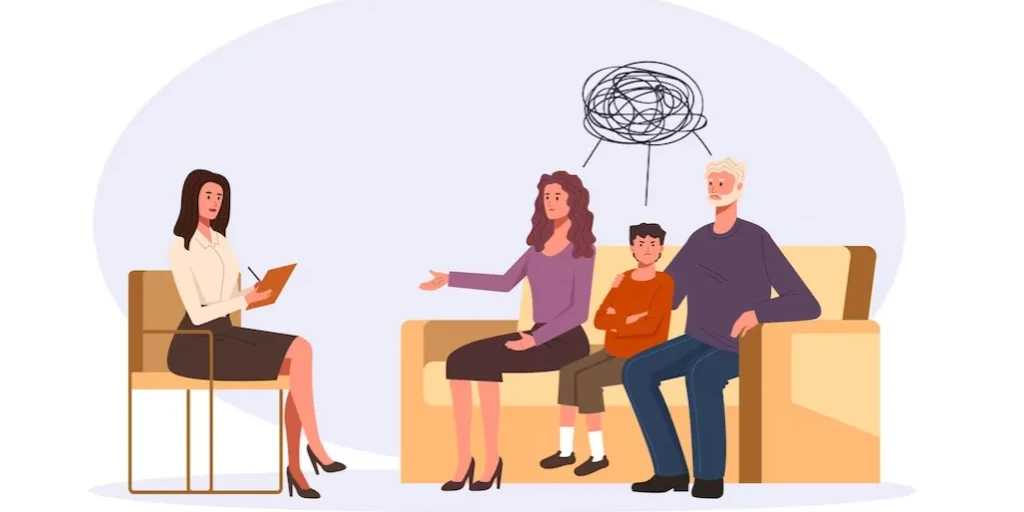
Bowen Center
Bowen Center is a public rehab located in Plymouth, Indiana. Bowen Center specializes in the treatme...

Southwestern Behavioral Healthcare – Youth Day Treatment
Southwestern Behavioral Healthcare - Youth Day Treatment offers psychiatric partial hospitalization ...

Bowen Center
Bowen Center is a private rehab located in Wabash, Indiana. Bowen Center specializes in the treatmen...

Groups
Groups is private healthcare company providing outpatient treatment for opiate addiction using weekl...

Meridian Health Services
Meridian Health Services - Willowbrook Parkway is a non-profit rehab located in Indianapolis, IN. Me...

Counseling for Change
Counseling For Change is a non-profit organization serving the Southern Indiana region with a contin...

Aspire Indiana Health – Mockingbird Hill Recovery Center
Mockingbird Hill Recovery Center is an addiction treatment center in Anderson, Ind. It houses approx...

New Visions Substance Abuse Counseling
New Visions Substance Abuse Counseling is a non-profit rehab located in Evansville, Indiana. New Vis...

Groups
Groups is private healthcare company providing outpatient treatment for opiate addiction using weekl...

Wabash Valley Alliance – Farabee Drive North
Wabash Valley Alliance's mission is to provide quality behavioral health and addictions care based o...

Centerstone – Hillcrest Road
Centerstone – Hillcrest Road is a non-profit rehab located in Bedford, Indiana. Centerstone – Hillcr...

Aspire Indiana Health – Progress House
Progress House is the state of Indiana's oldest and largest recovery residence. Progress House was f...

Community Howard Behavioral Health Services
Community Howard Behavioral Health Services offers the complete realm of behavioral care to treat th...

Randolph County Services
Randolph County Services is a private rehab located in Winchester, Indiana. Randolph County Services...
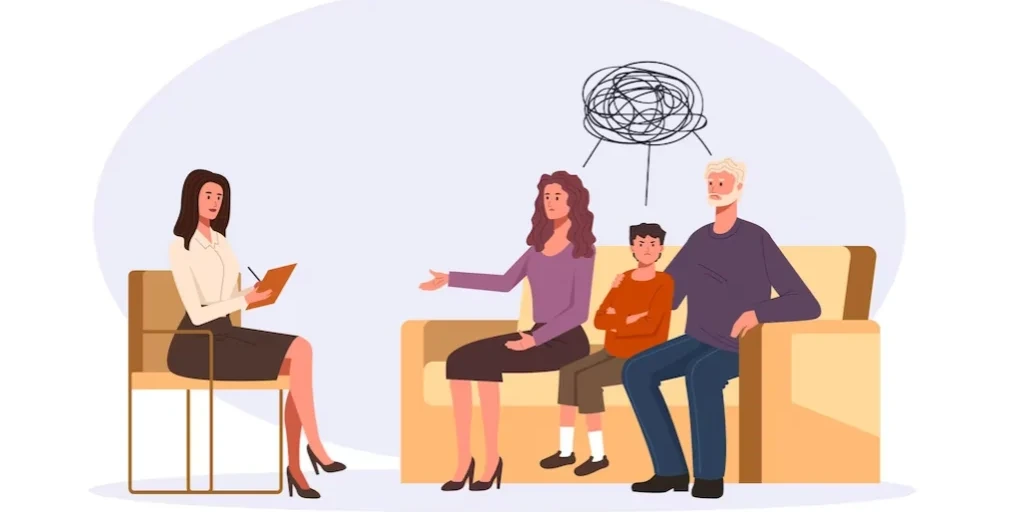
Groups
Groups is private healthcare company providing outpatient treatment for opiate addiction using weekl...

Saint Mary’s Medical Center of Evansville – Behavioral Health
Saint Mary’s Medical Center of Evansville – Behavioral Health is a private rehab located in Evansvil...

Spero Health – Jeffersonville
SelfRefind specializes in evidence based substance abuse treatment, integrating a trauma informed re...

Groups
Groups is private healthcare company providing outpatient treatment for opiate addiction using weekl...

Regional Mental Health Center
Regional Mental Health Center is located in Highland, Indiana. Regional Mental Health Center has suc...

Centerstone of Indiana
Centerstone - South Rogers Street is a private rehab located in Bloomington, IN. Centerstone - South...

Groups
Groups is private healthcare company providing outpatient treatment for opiate addiction using weekl...

Edgewater Behavioral Health Balanced Living
Edgewater Behavioral Health Balanced Living is a private rehab located in Gary, Indiana. Edgewater B...

Methodist Hospital – Behavioral Health
Methodist Hospital – Behavioral Health is a private rehab located in Gary, Indiana. Methodist Hospit...

CleanSlate Outpatient Addiction Medicine Merrillville
CleanSlate Outpatient Addiction Medicine Merrillville is a private rehab located in Merrillville, In...

New Season – Semoran Treatment Center
New Season - Semoran Treatment Center is a private rehab located in Gary, IN. New Season - Semoran T...

Christian Counseling and Addiction Services
Christian Counseling and Addiction Services is a private rehab located in New Castle, Indiana. Chris...

Park Center Counseling
Park Center Counseling is a dual diagnosis behavioral health treatment center based in Bluffton, IN ...

Broad Ripple Counseling Center
Broad Ripple Counseling Center is a private rehab located in Indianapolis, Indiana. Broad Ripple Cou...

Wabash Valley Alliance
Wabash Valley Alliance's mission is to provide quality behavioral health and addictions care based o...

Meridian Health Services – Adults
Meridian Health Services in Richmond, Virginia, provides adults with alcohol and drug rehabilitation...

Southern Hills Counseling Center
Southern Hills Counseling Center provides services for mental health and substance abuse disorders. ...

Southwestern Behavioral Healthcare – Warrick Regional Services
Southwestern Behavioral Healthcare - Warrick Regional Services offers outpatient services for those ...

Meridian Health Services
Meridian Health Services is a private rehab located in Portland, Indiana. Meridian Health Services s...

Caring About People – Counseling
Caring About People – Counseling is a private rehab located in Fort Wayne, Indiana. Caring About Peo...

Wabash Valley Alliance
Wabash Valley Alliance's mission is to provide quality behavioral health and addictions care based o...

Sowers of Seeds Counseling
Sowers of Seeds Counseling is a counseling clinic located in Anderson, IN. Sowers of Seeds Counselin...

Hamilton Center
Hamilton Center is a regional behavioral health system serving central and west central Indiana. Ham...

Indy Interventions
Indy Interventions is a private rehab located in Greenwood, Indiana. Indy Interventions specializes ...

Crossroads Counseling
Crossroads Counseling is a private rehab located in South Bend, Indiana. Crossroads Counseling speci...

Addictions Recovery Centers
Addictions Recovery Centers provides outpatient services that are related to the misuse of one or mo...

IU Health Methodist Hospital – Behavioral Health
IU Health Methodist Hospital – Behavioral Health is a private rehab located in Indianapolis, Indiana...

Centerstone
Centerstone is a private rehab located in North Vernon, Indiana. Centerstone specializes in the trea...

Adult and Child Center – Siear Terrace
Adult and Child Center – Siear Terrace is a private rehab located in Indianapolis, Indiana. Adult an...

Centerstone – Blair House
Centerstone Blair House is a drug and alcohol addiction rehab in Bloomington, IN. Through its compre...

Turning Point Counseling
Turning Point Counseling is a private counseling clinic located in Lafayette, IN. Turning Point Coun...

Choices Counseling Services
Choices Counseling Services is a private rehab located in Valparaiso, Indiana. Choices Counseling Se...

Grant Blackford Mental Health – Community Support
Grant Blackford Mental Health - Community Support offers outpatient treatment for individuals with a...

Park Center Counseling – Harmony House
Park Center Counseling – Harmony House is a private rehab located in Fort Wayne, Indiana. Park Cente...

Southern Hills Counseling Center
Southern Hills Counseling Center provides services for mental health and substance abuse disorders. ...

Life Improvement Counseling Center
Life Improvement Counseling Center is a private rehab located in Jeffersonville, Indiana. Life Impro...

Rainbow Recovery Resources
Rainbow Recovery Resources is a counseling clinic located in Crawfordsville, IN. Rainbow Recovery Re...

Community Mental Health Center
Community Mental Health Center is a non-profit rehab located in Lawrenceburg, Indiana. Community Men...

Adult and Child Center – Madison Avenue
Adult and Child Center - Madison Avenue helps people live healthier lives and reach their goals. Ser...

Hamilton Center
Hamilton Center is a regional behavioral health system serving central and west central Indiana. Ham...

Centerstone – Serenity House
Centerstone – Serenity House is a private rehab located in Richmond, Indiana. Centerstone – Serenity...

Centerstone
Centerstone is a private rehab located in Martinsville, Indiana. Centerstone specializes in the trea...

Resolute Treatment Center
Resolute Treatment Center (now called Resource Treatment Center) is a dual diagnosis mental health a...

Take Back Control
Take Back Control is a private rehab located in Franklin, Indiana. Take Back Control specializes in ...

Bowen Center – 700 North Center Street
Bowen Center – 700 North Center Street is a private rehab located in Plymouth, Indiana. Bowen Center...

Phoenix Associates
Phoenix Associates is a private rehab located in Greenfield, Indiana. Phoenix Associates specializes...

Wabash Valley Alliance
Wabash Valley Alliance's mission is to provide quality behavioral health and addictions care based o...

Wabash Valley Alliance
Wabash Valley Alliance's mission is to provide quality behavioral health and addictions care based o...

Women’s Bureau
Women's Bureau offers a a residential program which has 24/7 supervision for women who are pregnant ...

Life Recovery
Life Recovery offers outpatient treatment for individuals with alcohol and/or substance addiction. T...

Southwestern Behavioral Healthcare – Gibson Regional Services
Southwestern Behavioral Healthcare - Gibson Regional Services offers outpatient services for those r...

Confidential Care
Confidential Care provides Intensive Outpatient (IOP) services as an alternative to inpatient treatm...

Centerstone
Centerstone of Indiana - Spencer Integrated Health is a non-profit rehab located in Spencer, IN. Cen...

Addictions Recovery Centers
Addictions Recovery Centers provides outpatient services that are related to the misuse of one or mo...

Awakenings Counseling Center
Awakenings Counseling Center is a private rehab located in Merrillville, Indiana. Awakenings Counsel...

Serenity Counseling Services
Serenity Counseling Services is a private rehab located in Noblesville, Indiana. Serenity Counseling...

Counseling Services and Consulting
Counseling Services and Consulting is a private rehab located in Fort Wayne, Indiana. Counseling Ser...

Community Mental Health Center
Community Mental Health Center is a private rehab located in Vevay, Indiana. Community Mental Health...

Gallahue Mental Health Services – Crestview Center
Gallahue Mental Health Services – Crestview Center is a private rehab located in Anderson, Indiana. ...

Amethyst House
Amethyst House is a Bloomington, Indiana based not-for-profit United Way agency that provides outpat...

Hope House – Martha’s House
Hope House – Martha’s House is a private rehab located in Fort Wayne, Indiana. Hope House – Martha’s...

Bowen Center – The Harbours
Bowen Center–The Harbours, in Warsaw, Indiana, provides mental health and addiction recovery service...

Wise Choices
Wise Choices is a private rehab located in Fort Wayne, Indiana. Wise Choices specializes in the trea...

Park Center – State Boulevard
Park Center – State Boulevard is a private rehab located in Fort Wayne, Indiana. Park Center – State...

Behavioral Health Resource Center
Behavioral Health Resource Center is a public rehab located in Berne, Indiana. Behavioral Health Res...

Addictions Recovery Centers
Addictions Recovery Centers provides outpatient services that are related to the misuse of one or mo...

Oaklawn Psychiatric Center
Oaklawn Psychiatric Center - Oakland Avenue offers a wide range of mental health and addictions prog...

Community Mental Health Center – Ludlow Offices
Community Mental Health Center – Ludlow Offices is a non-profit rehab located in Lawrenceburg, India...

New Life Deliverance Center
New Life Deliverance Center is a private rehab located in South Bend, Indiana. New Life Deliverance ...

Midwest Counseling Associates
Midwest Counseling Associates is a private rehab located in Indianapolis, IN. Midwest Counseling Ass...

Southwestern Behavioral Healthcare
Southwestern Behavioral Healthcare is a private rehab located in Mount Vernon, Indiana. Southwestern...

Reaching Out Counseling
Reaching Out Counseling is a private rehab located in Elkhart, Indiana. Reaching Out Counseling spec...

The Coleman Institute
The Coleman Institute is dedicated on providing a rapid detox to help those individuals detoxify fro...

Centerstone – Pierson House
Centerstone – Pierson House is a private rehab located in Richmond, Indiana. Centerstone – Pierson H...

Wabash Valley Alliance
Wabash Valley Alliance's mission is to provide quality behavioral health and addictions care based o...

Summit Counseling Services
Summit Counseling Services provides outpatient mental and behavioral health care for youth and adult...

AA – Alcoholics Anonymous
AA – Alcoholics Anonymous is a private rehab located in Vincennes, Indiana. AA – Alcoholics Anonymou...

Forum at the Crossing
Forum at the Crossing is a private rehab located in Indianapolis, Indiana. Forum at the Crossing spe...

Fellowship House – Outpatient
Fellowship House – Outpatient is a private rehab located in Terre Haute, Indiana. Fellowship House –...

AA – Alcoholics Anonymous
AA – Alcoholics Anonymous is a private rehab located in Evansville, Indiana. AA – Alcoholics Anonymo...

Families First – Lebanon
Families First – Lebanon is a private rehab located in Lebanon, Indiana. Families First – Lebanon sp...

Waymon Brown III and Associates
Waymon Brown III and Associates is a private rehab located in Fort Wayne, Indiana. Waymon Brown III ...

Centerstone – Hillcrest House
Centerstone – Hillcrest House is a private rehab located in Seymour, Indiana. Centerstone – Hillcres...

The Hope House
The Hope House is a non-profit organization located in Richmond, IN. The Hope House specializes in t...

Oxford House Mariposa
Oxford House Mariposa is a non-profit house located in New Albany, IN. Oxford House Mariposa helps i...

Families First – Greenfield
Families First – Greenfield is a private rehab located in Greenfield, Indiana. Families First – Gree...

Proactive – Berg Counseling
Proactive – Berg Counseling is a private rehab located in Carmel, Indiana. Proactive – Berg Counseli...

Families First
Families First is a private rehab located in Plainfield, Indiana. Families First specializes in the ...

Midwest Center for Youth and Families
Midwest Center for Youth and Families is a private rehab located in Valparaiso, Indiana. Midwest Cen...

Guidance Ministries
Guidance Ministries it's a church that offers addiction recovery classes and support, it's located i...

Evansville Psychiatric Childrens Center
Evansville Psychiatric Childrens Center is a public rehab located in Evansville, Indiana. Evansville...

Indy Cottage Counseling
Indy Cottage Counseling is a private rehab located in Indianapolis, Indiana. Indy Cottage Counseling...

LifeSpring Health Systems – Adult Behavioral Services
LifeSpring Health Systems – Adult Behavioral Services is a private rehab located in Jeffersonville, ...

Centerstone
Centerstone is a private rehab located in Nashville, Indiana. Centerstone specializes in the treatme...

Saint Catherine Hospital – Behavioral Health Services
Community Healthcare System is a behavioral health treatment facility in East Chicago, IN. Committed...

Midwest Addiction Psychiatric Services
Midwest Addiction Psychiatric Services is a private rehab located in Decatur, Indiana. Midwest Addic...

The Salvation Army Northwestern Indiana Adult Rehabilitation Center
The Salvation Army, an international movement, is an Evangelical part of the Universal Christian Chu...

Regional Mental Health Center
Regional Mental Health Center is a dual diagnosis and substance use disorder treatment center locate...

Four County Counseling Center
Four County Counseling Center is a non-profit community mental health center located in Tipton, Indi...

Northeastern Center – Inpatient
Northeastern Center–Inpatient, located in Auburn, Indiana, provides mental health and dual diagnosis...

Oxford House Liam
Oxford House Liam is a non-profit house located in South Bend, IN. Oxford House Liam helps individua...
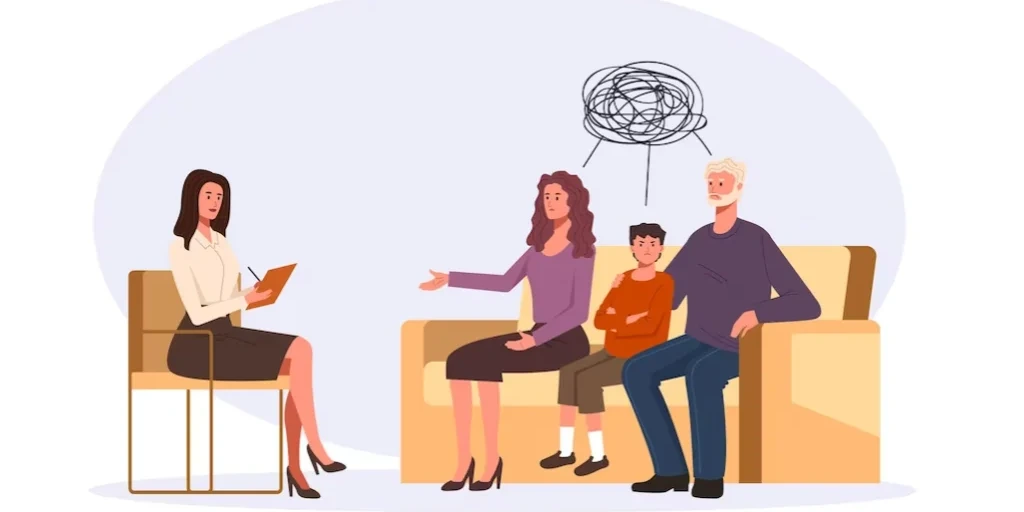
ADAPT Counseling Services
ADAPT Counseling Services is a private rehab located in Evansville, Indiana. ADAPT Counseling Servic...

Recovery Associates
Recovery Associates is a private rehab located in Terre Haute, Indiana. Recovery Associates speciali...

Alpha Counseling Services
Alpha Counseling Services is a private rehab located in Indianapolis, Indiana. Alpha Counseling Serv...

Saint Elizabeth Behavioral Health
Saint Elizabeth Behavioral Health is a private rehab located in Crawfordsville, Indiana. Saint Eliza...

Planted Seed Ministries
Planted Seed Ministries is a faith based social service agency whose comprehensive goal is to offer ...

AA – Alcoholics Anonymous
AA – Alcoholics Anonymous is a private rehab located in Terre Haute, Indiana. AA – Alcoholics Anonym...

Wabash Valley Alliance
Wabash Valley Alliance's mission is to provide quality behavioral health and addictions care based o...

Centerstone – Kinsey Transitional Living
Centerstone – Kinsey Transitional Living is a private rehab located in Richmond, Indiana. Centerston...

Terre Haute Regional Hospital – Behavioral Health
Terre Haute Regional Hospital – Behavioral Health is a private rehab located in Terre Haute, Indiana...

Achievement Rehabilitation
Achievement Rehabilitation is a private rehab located in Fort Wayne, Indiana. Achievement Rehabilita...

Transitions
Transitions is a private rehab located in Fort Wayne, Indiana. Transitions specializes in the treatm...

Serenity Counseling Center
Serenity Counseling Center is a private rehab located in Greenwood, Indiana. Serenity Counseling Cen...

AA – Alcoholics Anonymous
AA – Alcoholics Anonymous is a private rehab located in Fort Wayne, Indiana. AA – Alcoholics Anonymo...

James Wortham Counseling Services
James Wortham Counseling Services is an outpatient clinic that offers substance abuse treatment for ...

Child Development and Psychological Health Center
Child Development and Psychological Health Center is a private rehab located in South Bend, Indiana....

Park Center Counseling
Park Center Counseling is a private counseling clinic located in Decatur, Indiana. Park Center Couns...

Back On Track Counseling
Back On Track Counseling is a private rehab located in Fort Wayne, Indiana. Back On Track Counseling...

Cornerstone House Transitional Living
Cornerstone House Transitional Living is a private rehab located in Fort Wayne, Indiana. Cornerstone...

Integrative Healing Enterprises
Integrative Healing Enterprises is a private rehab located in Indianapolis, Indiana. Integrative Hea...

Four County Counseling Center – REACH Center
Four County Counseling Center is a non-profit community mental health center located in Logansport, ...

Oxford House Kai
Oxford House Kai is a sober living facility in Greenwood, Indiana. It is a seven bed facility that e...

Centerstone – Indiana House
Located in Columbus, Indiana, Centerstone – Indiana House is a drug and alcohol rehab for adults wit...

Veteran Health Indiana – Terre Haute VA Mental Health Clinic
VA Terre Haute Mental Health Outpatient Clinic is located in Terre Haute, Indiana. VA Terre Haute Me...

Change Therapy Center
Change Therapy Center, located in Valparaiso, Indiana, offers trauma treatment, mental health suppor...

Addictive Behaviors Counseling Center
Addictive Behaviors Counseling Center is a private rehab located in Fort Wayne, Indiana. Addictive B...

Southwestern Behavioral Healthcare – Posey Regional Services
Southwestern Behavioral Healthcare - Posey Regional Services offers outpatient services for those re...

Alcohol Abuse Deterrent Program
Alcohol Abuse Deterrent Program is a private rehab located in Fort Wayne, Indiana. Alcohol Abuse Det...

VA Northern Indiana Health Care System – Muncie Community-Based Outpatient Clinic
Muncie Community-Based Outpatient Clinic is a clinic located in Muncie, IN. Muncie Community-Based O...

Veteran Health Indiana – Bloomington VA Mental Health Clinic
VA Bloomington Mental Health Outpatient Clinic is located in Bloomington, Indiana. VA Bloomington Me...

Resource Treatment Center
Resource Treatment Center, in Indianapolis, Indiana, provides mental and behavioral healthcare servi...

Complete Provider Rehabilitation
Complete Provider Rehabilitation is a private rehab located in Indianapolis, Indiana. Complete Provi...

Volunteers of America – STRIVE Indy
Volunteers of America - STRIVE Indy is a Non-Profit organization located in Indianapolis, IN. Volunt...

Apostolic Youth and Family
Apostolic Youth and Family is a private rehab located in Gary, Indiana. Apostolic Youth and Family s...

Penrod Counseling Center
Penrod Counseling Center is a private rehab located in Avon, Indiana. Penrod Counseling Center speci...

Oficina Intergrupal Hispana
Oficina Intergrupal Hispana is a private rehab located in Indianapolis, Indiana. Oficina Intergrupal...

ASU Group Recovery Unlimited
ASU Group Recovery Unlimited is a private rehab located in Indianapolis, Indiana. ASU Group Recovery...

AA – Alcoholics Anonymous
AA – Alcoholics Anonymous is a private rehab located in Kokomo, Indiana. AA – Alcoholics Anonymous s...

Christian Counseling Center
Christian Counseling Center is a private rehab located in Avon, Indiana. Christian Counseling Center...

Bowen Center – 914 North Center Street
Bowen Center – 914 North Center Street is a private rehab located in Plymouth, Indiana. Bowen Center...

Family Counseling Center
Family Counseling Center is a private rehab located in Avon, Indiana. Family Counseling Center speci...

Families First
Families First is a non-profit rehab located in Indianapolis, Indiana. Families First specializes in...

Southern Hills Counseling Center
Southern Hills Counseling Center provides services for mental health and substance abuse disorders. ...

Addiction Resource Network of Indiana
Addiction Resource Network of Indiana is a private rehab located in Indianapolis, Indiana. Addiction...

Center for Solutions
Center for Solutions is a private rehab located in Fort Wayne, Indiana. Center for Solutions special...

Aspire Indiana
Aspire Indiana - Ransdell Road is a non-profit facility that offers outpatient services for individu...

Addiction and Family Care
Addiction and Family Care is a private rehab located in Hammond, Indiana. Addiction and Family Care ...

Switzerland County Counseling Center
Switzerland County Counseling Center is a private rehab located in Vevay, Indiana. Switzerland Count...

Aspire Indiana Health – Next Step
Next Step is a transitional housing program for residents of Progress House who have progressed far ...

Assist
Assist is a private rehab located in Terre Haute, Indiana. Assist specializes in the treatment of Su...

Reformers Unanimous
Reformers Unanimous is a private rehab located in Trafalgar, Indiana. Reformers Unanimous specialize...

Southwestern Behavioral Healthcare – Stepping Stone
Southwestern Behavioral Healthcare is a private, non-profit facility that offers outpatient and inpa...

Community Mental Health Center Inc Dearborn County
Community Mental Health Center Inc Dearborn County is a private rehab located in Lawrenceburg, India...

Valley Oaks Health (Crawfordsville)
Valley Oaks Health (Crawfordsville) is a private rehab located in Crawfordsville, Indiana. Valley Oa...

Dunn Center
Dunn Center is a private rehab located in Rushville, Indiana. Dunn Center specializes in the treatme...

Groups
Groups is private healthcare company providing outpatient treatment for opiate addiction using weekl...

Groups
Groups is private healthcare company providing outpatient treatment for opiate addiction using weekl...

Options Behavioral Health Hospital
Options Behavioral Health Hospital is a private rehab located in Indianapolis, Indiana. Options Beha...

Dunn Mental Health Center Rush County
Dunn Mental Health Center Rush County is a private rehab located in Rushville, Indiana. Dunn Mental ...

Serenity Now Psychiatric and Counseling Services
Serenity Now Psychiatric and Counseling Services is a non-profit rehab located in Bedford, Indiana. ...

Living Life Clean
Living Life Clean is a private rehab located in Muncie, Indiana. Living Life Clean specializes in th...

ARC
ARC is a private rehab located in Lagrange, Indiana. ARC specializes in the treatment of Substance A...

Groups
Groups is private healthcare company providing outpatient treatment for opiate addiction using weekl...

Centerstone – Aspen House
Centerstone–Aspen House is a residential drug and alcohol rehab for adults in North Vernon, Indiana....

Life Recovery Center – 16th street
Life Recovery Center – 16th street is a drug and alcohol treatment center that supports adults with ...

Pro Active Resources
Pro Active Resources is a private rehab located in Noblesville, Indiana. Pro Active Resources specia...

Centerstone Rush County
Centerstone Rush County is a private rehab located in Rushville, Indiana. Centerstone Rush County sp...

Bridges of Hope Treatment Center
Bridges of Hope Treatment Center is a private rehab located in Anderson, Indiana. Bridges of Hope Tr...

Counseling Associates
Counseling Associates is a private rehab located in Mishawaka, Indiana. Counseling Associates specia...

Groups
Groups is private healthcare company providing outpatient treatment for opiate addiction using weekl...

Counseling and Mediation Services
Counseling and Mediation Services is a private rehab located in Goshen, Indiana. Counseling and Medi...

Danen Counseling Services
Danen Counseling Services is a private rehab located in Goshen, Indiana. Danen Counseling Services s...

Willowstone Family Services
Willowstone Family Services is a non-profit rehab located in Lafayette, Indiana. Willowstone Family ...

Four County Counseling Center
Four County Counseling Center (4C Health) is a dual diagnosis mental health and substance use treatm...











































